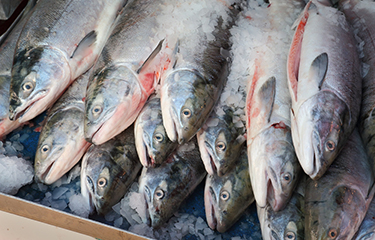Bristol Bay sockeye running strong as markets remain murky

After a slow start to the season, Bristol Bay, Alaska – home to the world’s largest sockeye run –is seeing fish hit hard and fast, with a string of historically strong days spiking catch numbers and overloading processors.
The run lagged several days behind schedule, with slow fishing across all four major districts into July dragging down statewide salmon numbers. The season has also had a rocky start as preparations for the season were impacted by COVID-19, in some instances leading to calls for the season to be closed entirely in the first months of the pandemic’s arrival in the United States.
Despite the challenges the season commenced, and on Saturday, 4 July, fish started hitting nets. The following days saw a string of bay-wide harvests at or above 2.5 million fish, including a staggering 3 million fish on Monday, 6 July, which the Bristol Bay Regional Development Association said was among the largest daily catches since 2012.
The Alaska Department of Fish and Game reported Monday, 12 July, a total run of nearly 40 million fish, already in the low range of pre-season forecasts. The total harvest was over 25 million sockeye after Sunday’s haul of 1.74 million fish.
Tim Sands, Alaska Department of Fish and Game’s area manager for the West Side of Bristol Bay, told SeafoodSource that while the arrival of the fish was a welcome development, the concentration is posing challenges for the Bay’s processing capacity.
“Historically, 2.5 million fish is the tipping point. We can sustain 2.5 million fish for a day, maybe two,” Sands said.
According to Sands, processors in the Nushagak District went on limits as early as Sunday, 5 July, with East Side processors joining them on capping catch a day or two later.
Norm Van Vactor, the CEO of the Bristol Bay Regional Economic Development Corporation, told SeafoodSource the burst of fish was another complication in a season already burdened by coronavirus concerns.
“A wall of fish is a processor’s worst nightmare. That had an impact on processors. And it’s probably fair to say that across the board, COVID-19 protocols have also had a significant impact,” Van Vactor said.
Van Vactor said that some processors are missing key employees who stayed home because of the virus. On top of that, floor crews in the plants are smaller because fewer workers were available, and some companies scaled back crews according to their COVID-19 protocols.
“The overall available production capacity is certainly down in the bay, and I’ve also heard that some of the protocols at the plant level have people working 14 hours a day instead of 18 hours a day,” Van Vactor said.
Sands added some of the harvest has been shipped out of Bristol Bay to alleviate the region’s processing crunch, but he hopes the run will continue and even out in the coming days.
“We definitely had a concentration of fish for a few days, but we’re still on the front side of this. I think there’s still a lot more to go, so it remains to be seen if you can call the whole thing concentrated. We just had a stretch where there was lots of fish coming in all at once,” Sands said.
While the fish are coming strong, the market the fish are selling into is a murkier variable. COVID-19 restaurant shutdowns – like the recent shutdown in California – have bombed out the foodservice market, and analysts like the McDowell Group’s Garrett Everidge are still unsure whether jumps in retail sales will make up the difference. Both Everidge and Van Vactor said that while the market is still opaque, they expect base prices to fall well below last season’s price of around USD 1.25 (EUR 1.05).
“Just generically, coming out of 2019, the Alaska salmon business was not necessarily healthy anyway. In hindsight, prices last season were probably just a little too high, and you combine that with COVID, and my personal gut feeling was we were looking at a slight drop,” Van Vactor said.
Bristol Bay processors typically do not post prices on fish until the season is drawing to a close, but many in the Bay were disheartened when Trident Seafoods recently announced USD 0.60 (EUR 0.53) a pound for sockeye on Alaska’s South Peninsula. Bristol Bay prices typically come in a bit below South Peninsula prices.
Reports from the fishing hub Naknek said Copper River Seafoods had posted outside their facility early in the season they were buying fish with incentives at USD 1.50 (EUR 1.32), and that price had progressively dropped. On Sunday, 12 July, it was reported that the posted price was USD 0.80 (EUR 0.70) per pound, which would put the base price around USD 0.50 (EUR 0.44) after subtracting incentives.
Processors have also assumed higher overhead this season from coronavirus precautions and testing, with positive cases registered in Bristol Bay seafood processing facilities run by Silver Bay Seafoods, Trident Seafoods, and OBI Seafoods. The New York Times reported on Sunday that the Bristol Bay Borough had the nation’s highest number of recent COVID-19 cases per resident, with 32 recent positive tests putting the number at 3,828 cases per 100,000 people.
The number does not take into account the roughly 12,000 non-resident seafood workers that join Bristol Bay’s 7,000 permanent residents for the summer fishery.
Photo courtesy of max Lindenthaler/Shutterstock






Share